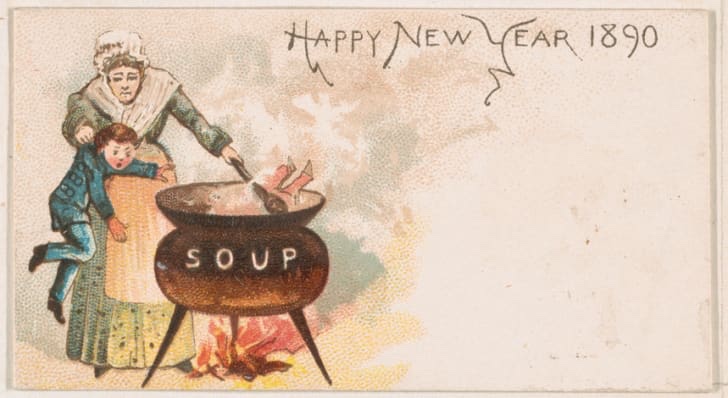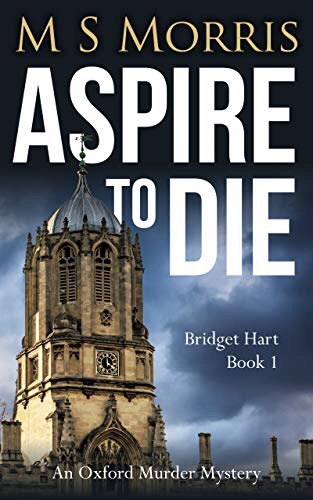Here were kept up the old games of hoodman blind, shoe the wild mare, hot cockles, steal the white loaf, bob apple, and snap dragon; the Yule-clog and Christmas candle were regularly burnt, and the mistletoe with its white berries hung up, to the imminent peril of all the pretty housemaids. Washington Irving
Kissing under the mistletoe has long been a part of American Christmas tradition. But just what is mistletoe and how did its association with Christmas evolve?
Mistletoe is a partial parasite (a “hemiparasite”) the grows on the branches of trunk of trees, penetrating the host with its own roots. While it is capable of surviving on its own, it rarely does so. There are two types of mistletoe. The type commonly used as a Christmas decoration (Phoradendron flavescens) is native to North America and grows from New Jersey to Florida and into the interior. The other type,Viscum album, is European, and grows on apple or oak trees. Its white berries are toxic. Because mistletoe remains green when the tree itself drops its foliage, the Greeks. Celts, and Germans believed that it had mystical powers as the source of the tree’s life. Through the centuries it was used as a ceremonial plant, becoming associated with many folklore customs. The traditions which began with the European mistletoe were transferred to the similar American plant with the process of immigration and settlement.
The common name of the plant is derived from the ancient belief that mistletoe was propagated from bird droppings. This belief was related to the then-accepted principle that life could spring spontaneously from dung. It was observed in ancient times that mistletoe would often appear on a branch or twig where birds had left droppings. “Mistel” is the Anglo-Saxon word for “dung,” and “tan” is the word for “twig”. So, mistletoe means “dung-on-a-twig”. By the sixteenth century, botanists had discovered that the mistletoe plant was spread by seeds which had passed through the digestive tract of birds. One of the earliest written references to this appeared in England, in 1532, in a Herbal published by Turner. Botanists of the time also observed that the sticky berry seeds of the mistletoe tended to cling to the bills of birds. When the birds cleaned their bills by rubbing them against the branches or bark of trees, the the seeds were further scattered.
on a branch or twig where birds had left droppings. “Mistel” is the Anglo-Saxon word for “dung,” and “tan” is the word for “twig”. So, mistletoe means “dung-on-a-twig”. By the sixteenth century, botanists had discovered that the mistletoe plant was spread by seeds which had passed through the digestive tract of birds. One of the earliest written references to this appeared in England, in 1532, in a Herbal published by Turner. Botanists of the time also observed that the sticky berry seeds of the mistletoe tended to cling to the bills of birds. When the birds cleaned their bills by rubbing them against the branches or bark of trees, the the seeds were further scattered.
From ancient times, then, mistletoe has been one of the most magical, mysterious, and sacred plants of European folklore. It was considered a bestower of life and fertility, a protectant against poison, and an aphrodisiac.
The mistletoe of the sacred oak was especially sacred to the ancient Celtic Druids. On the sixth night of the moon white-robed Druid priests would cut mistletoe from the sacred with a golden sickle. The cutting ritual came to symbolize the emasculation of the old King by his successor. It was gathered at both mid-summer and winter solstices, and the custom of using mistletoe to decorate houses at Christmas is a survival of the Druid and other pre-Christian traditions. Mistletoe is still ceremonially plucked on mid-summer eve in some Celtic and Scandinavian countries.
In the Middle Ages and later, branches of mistletoe were hung from ceilings to ward off evil spirits, or were placed over house and stable doors to prevent the entrance of witches. It was also believed that the oak mistletoe could extinguish fire. This was associated with an earlier belief that the mistletoe itself could come to the tree during a flash of lightning. In parts of England and Wales farmers would give the Christmas bunch of mistletoe to the first cow that calved in the New Year. This was thought to bring good luck to the entire herd.
Kissing under the mistletoe is first found associated with the Greek festival of Saturnalia, and later with primitive marriage rites. Mistletoe was believed to have the power of bestowing fertility, and the dung from which the mistletoe was thought to arise was also said to have “life-giving” power. In Scandinavia, it was considered a plant of peace, under which enemies could declare a truce or warring spouses kiss and make-up. In some parts of England, the Christmas mistletoe is burned on the twelfth night lest all the boys and girls who have kissed under it never marry.
Mistletoe is the “official floral emblem” of Oklahoma.
And for those who wish to observe the correct etiquette: a man should pluck a berry when he kisses a woman under the mistletoe, and when the last berry is gone, there should be no more kissing. But these days, mistletoe is sold without its toxic berries, so that custom must be overlooked. Merry, merry Christmas. Let the kissing begin!
[Adapted from http://www.gardenline.usask.ca/%5D






 on a branch or twig where birds had left droppings. “Mistel” is the Anglo-Saxon word for “dung,” and “tan” is the word for “twig”. So, mistletoe means “dung-on-a-twig”. By the sixteenth century, botanists had discovered that the mistletoe plant was spread by seeds which had passed through the digestive tract of birds. One of the earliest written references to this appeared in England, in 1532, in a Herbal published by Turner. Botanists of the time also observed that the sticky berry seeds of the mistletoe tended to cling to the bills of birds. When the birds cleaned their bills by rubbing them against the branches or bark of trees, the the seeds were further scattered.
on a branch or twig where birds had left droppings. “Mistel” is the Anglo-Saxon word for “dung,” and “tan” is the word for “twig”. So, mistletoe means “dung-on-a-twig”. By the sixteenth century, botanists had discovered that the mistletoe plant was spread by seeds which had passed through the digestive tract of birds. One of the earliest written references to this appeared in England, in 1532, in a Herbal published by Turner. Botanists of the time also observed that the sticky berry seeds of the mistletoe tended to cling to the bills of birds. When the birds cleaned their bills by rubbing them against the branches or bark of trees, the the seeds were further scattered.



